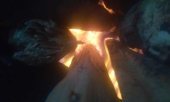



























Now you can track your PEP BB and Badge progress in Google Sheets! Download today: PEP BB Calculator for Google Sheets

 1
1




















Now you can track your PEP BB and Badge progress in Google Sheets! Download today: PEP BB Calculator for Google Sheets
 4
4




Silence is Golden
For all your RMH needs:
dragontechrmh.com

 2
2















 1
1





Now you can track your PEP BB and Badge progress in Google Sheets! Download today: PEP BB Calculator for Google Sheets
 2
2




Silence is Golden
For all your RMH needs:
dragontechrmh.com

 3
3




















Now you can track your PEP BB and Badge progress in Google Sheets! Download today: PEP BB Calculator for Google Sheets




Silence is Golden
For all your RMH needs:
dragontechrmh.com





For all your Montana Masonry Heater parts (also known as) Rocket Mass heater parts.
Visit me at
dragontechrmh.com Once you go brick you will never go back!

 2
2




 1
1








 3
3




For all your Montana Masonry Heater parts (also known as) Rocket Mass heater parts.
Visit me at
dragontechrmh.com Once you go brick you will never go back!
 1
1















 1
1




Now you can track your PEP BB and Badge progress in Google Sheets! Download today: PEP BB Calculator for Google Sheets
 2
2




Explore the Permies Digital Market - ebooks, movies, building plans, courses, and more. Oh my!


 7
7




"Let your life be your argument."




 6
6




For all your Montana Masonry Heater parts (also known as) Rocket Mass heater parts.
Visit me at
dragontechrmh.com Once you go brick you will never go back!
 5
5




"Let your life be your argument."

|
If we don't do the shopping, we won't have anything for dinner. And I've invited this tiny ad:
Support permies and give beautiful gifts to gardeners: permaculture playing cards.
https://gardener-gift.com/
|







